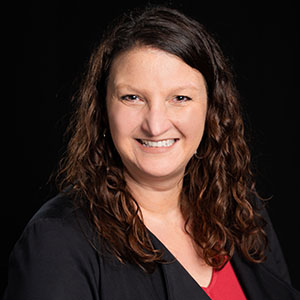Jennifer Davidson, associate professor of practice in economics, Nebraska Council on Economic Education president and Nebraska Bankers Association Faculty Fellow, was featured in the Nebraska Today series Pocket Science, which enables people to quickly learn the "What," "So what" and "Now what" of Husker research. Davidson and William Walstad co-authored the article, "Long-term analysis of a savings program in elementary school" published in Citizenship Social and Economics Education.
What?
 Jennifer Davidson, associate professor of practice in economics, Nebraska Council on Economic Education president and Nebraska Bankers Association Faculty Fellow
Jennifer Davidson, associate professor of practice in economics, Nebraska Council on Economic Education president and Nebraska Bankers Association Faculty Fellow
Saving money may be synonymous with the realities of adulthood, but the habit can be and often is established much earlier.
In some parts of the United States, the old-school piggy bank has given way to the in-school savings program, or ISSP, whereby a bank or credit union sets up a branch at a local elementary school. Each week, students have the opportunity to deposit actual money and earn small rewards that incentivize them to save in much the way that accruing interest does. At the end of their elementary school years, students close their accounts and walk away with their savings.
As president of the Nebraska Council on Economic Education, Jennifer Davidson has helped spearhead 36 partnerships between financial institutions and elementary schools in Nebraska and Iowa.
So what?
Despite the emergence of ISSPs, very little research has examined the potential outcomes of participating in them. Davidson and William Walstad, professor emeritus of economics, set out to search for long-term effects among students of a rural Nebraska high school. Nearly two-thirds of those high schoolers had taken part in the same ISSP between three and six years before completing a survey from the Husker team.
According to that survey, 50 of the 55 high schoolers (91%) who participated in the ISSP had since opened a bank account, compared with 18 of the 30 (or 60% of the) non-ISSP students. In fact, 66% of the ISSP group had opened an account even before entering high school, versus just 27% of those who were not ISSP participants.
The team’s survey also revealed that the students with bank accounts — nearly three-quarters of them former ISSP members — were 27 percentage points more likely to be regularly saving money, indicating that ISSPs indirectly contribute to the habit.
Now what?
Because students were not randomly assigned to the ISSP and non-ISSP groups, Davidson and Walstad could not confirm the in-school savings program as a primary cause of the differences between the two groups. Future studies, especially those with larger sample sizes, could help establish that causation.
But the findings do strongly suggest that ISSPs are working as intended, the researchers said, by encouraging children and teens to form the sorts of financial habits that will benefit them as adults.
Published: October 8, 2022